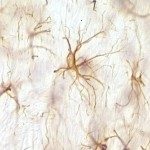Lien vers Pubmed [PMID] – 9446585
J. Biol. Chem. 1998 Jan;273(5):2777-83
Monoclonal, murine IgG1s S-20-4, A-20-6, and IgA 2D6, directed against Vibrio cholerae O:1 Ogawa-lipopolysaccharide exhibited the same fine specificities and similar affinities for the synthetic methyl alpha-glycosides of the (oligo)saccharide fragments mimicking the Ogawa O-polysaccharide (O-PS). They did not react with the corresponding synthetic fragments of Inaba O-PS. IgG1s S-20-4 and A-20-6 have absolute affinity constants for synthetic Ogawa mono- to hexasaccharides of from approximately 10(5) to approximately 10(6) M-1. For IgG1s S-20-4, A-20-6, and IgA 2D6, the nonreducing terminal residue of Ogawa O-PS is the dominant determinant, accounting for approximately 90% of the maximal binding energy shown by these antibodies. Binding studies of derivatives of the Ogawa monosaccharide and IgGs S-20-4 and A-20-6 revealed that the C-2 O-methyl group fits into a somewhat flexible antibody cavity and that hydrogen bonds involving the oxygen and, respectively, the OH at the 2- and 3-position of the sugar moiety as well as the 2′-position in the amide side chain are required. Monoclonal IgA ZAC-3 and IgG3 I-24-2 are specific for V. cholerae O:1 serotypes Ogawa/Inaba-LPS.1 The former did not show binding with members of either series of the synthetic ligands related to the O-antigens of the Ogawa or Inaba serotypes, in agreement with its reported specificity for the lipid/core region (1). Inhibition studies revealed that the binding of purified IgG3 I-24-2 to Ogawa-LPS might be mediated by a region in the junction of the OPS to the lipid-core region of the LPS. cDNA cloning and analysis of the anti-Ogawa antibodies S-20-4, A-20-6, and 2D6 revealed a very high degree of homology among the heavy chains. Among the light chains, no such homology between S-20-4 and A-20-6 on the one hand, and 2D6 on the other hand, exists. For the anti-Inaba/Ogawa antibodies I-24-2 and ZAC-3, their heavy chains are completely different, with some homology among the light chains.

